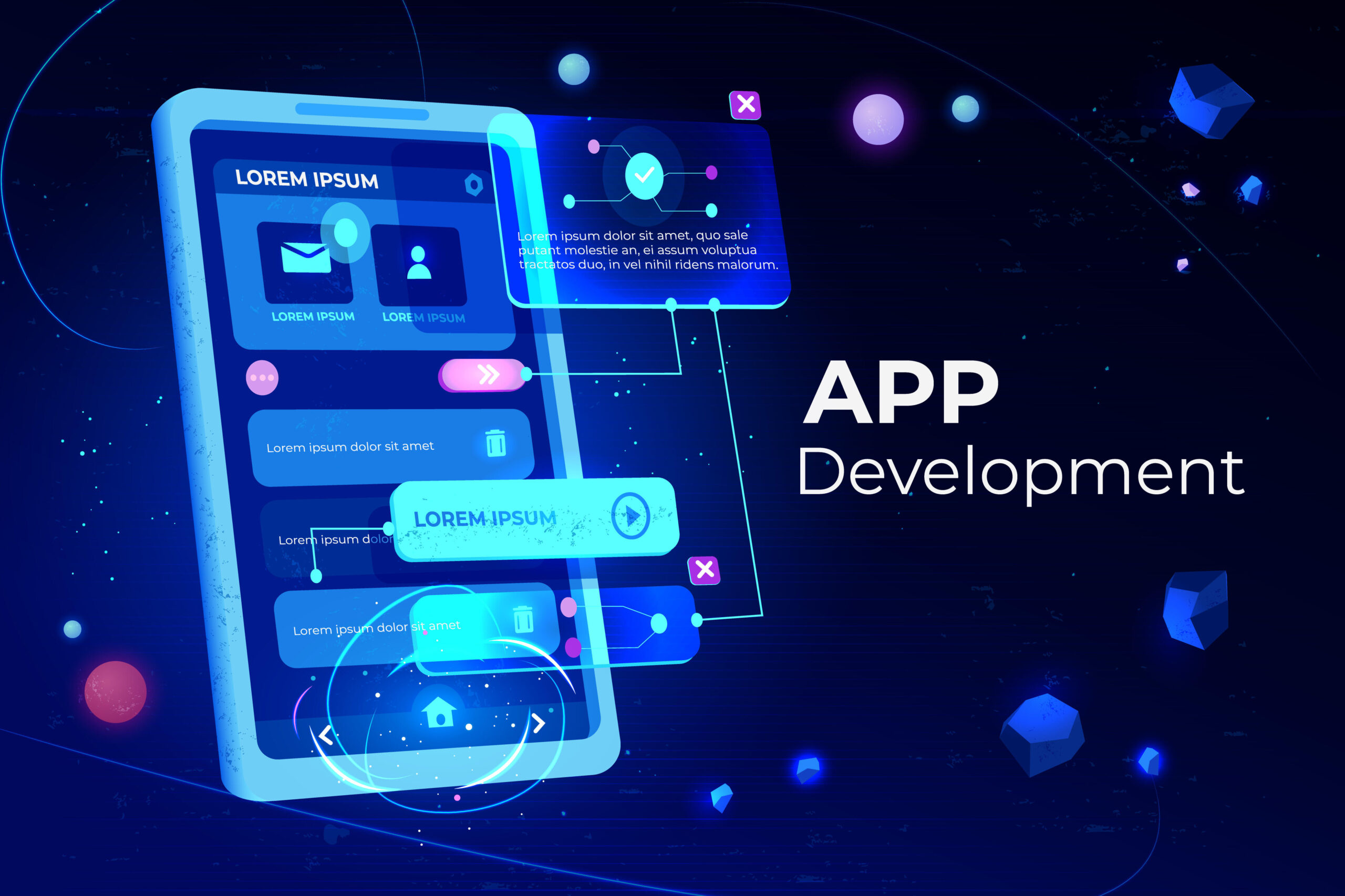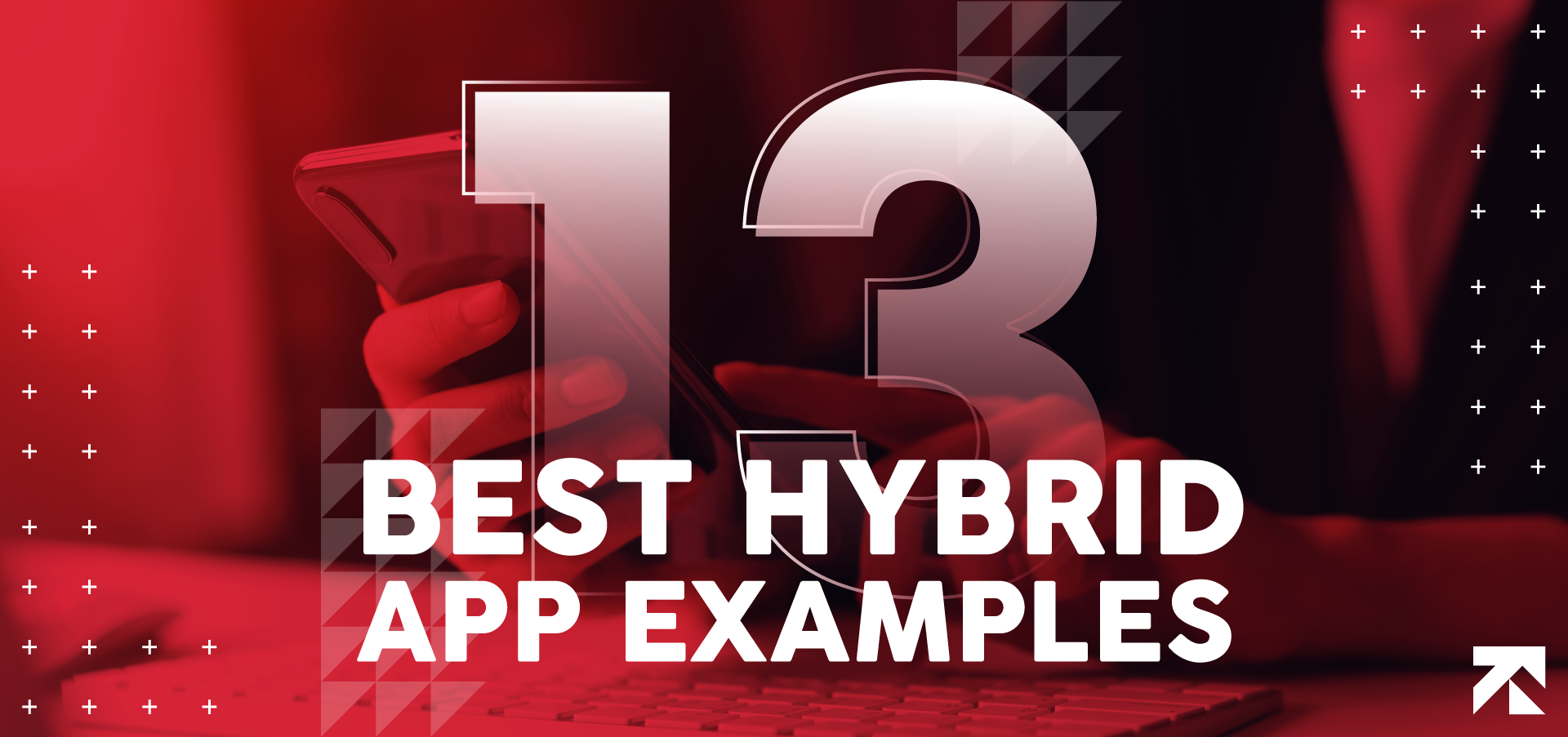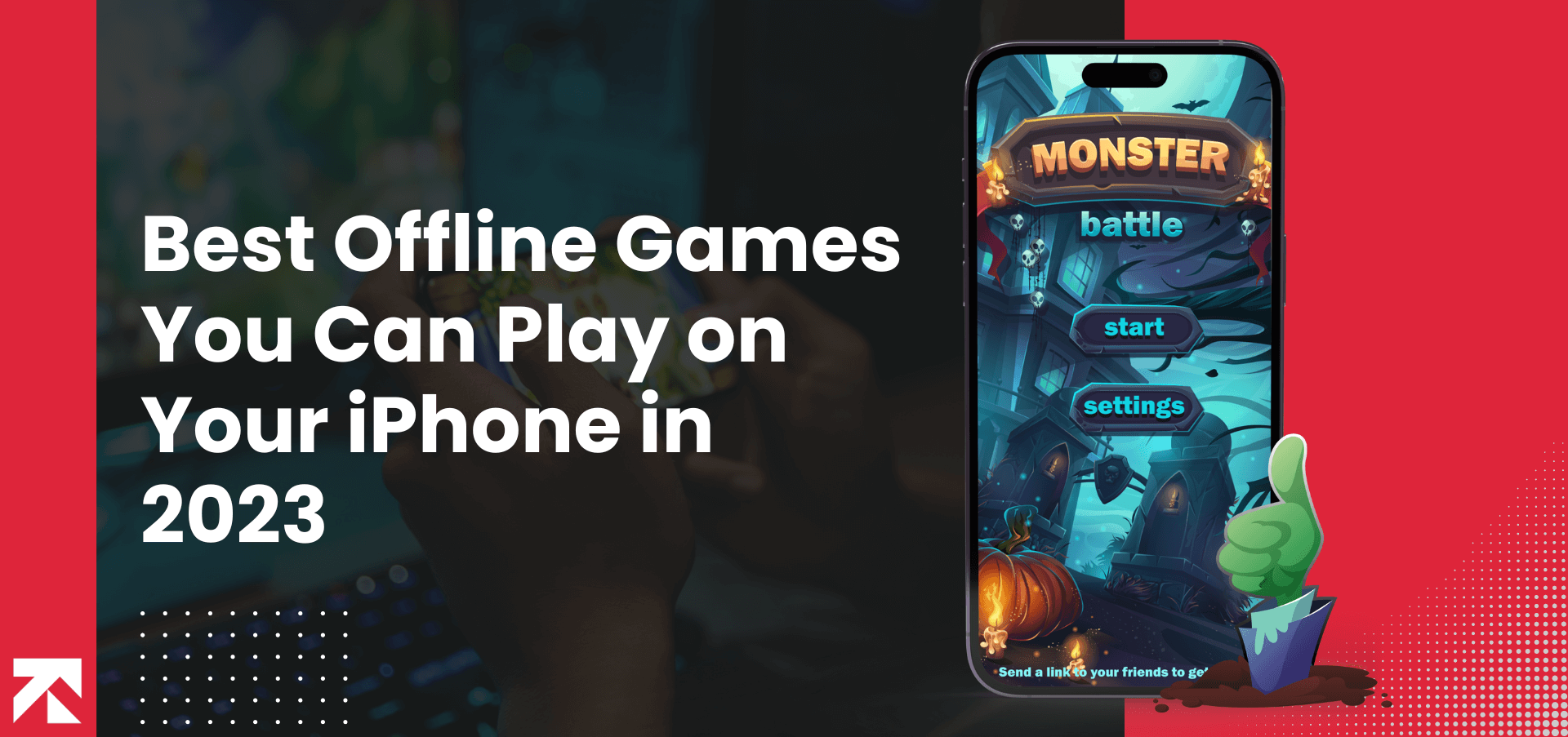One of the first few decisions you make when developing a mobile application is whether you want it to be a web app, native app or a hybrid app. Each type has its own set of pros and cons though hybrid apps prove to be more beneficial as depicted by the existing hybrid app examples. They show superiority in most avenues including a budget, timeline, user interface, user experience and user interface.
Empower code reuse and cross-platform compatibility with hybrid apps. If you don’t know where to start, get in touch with a cross platform mobile app development company such as Trango Tech!
Let’s go over some of the most successful hybrid apps, their pros and cons and the popular technologies used to develop them.
What is a Hybrid App?
Hybrid apps are a blend of native and web apps. They have the source code of web technologies with the shell of a native app. A hybrid app can be installed on your mobile devices via App Store or Google Play and can access hardware on your phone, just like a native app. Then how do hybrid apps have an advantage over native apps is what we’ll learn when we go over the differences.
Fun Fact: In 2012, Facebook first presented the concept of hybrid apps, and ever since it has been applied to many business models successfully.
Difference Between Hybrid Apps and Native Apps
The most basic difference between hybrid and native apps is that while native apps are built for one specific operating system such as iOS or Android, hybrid apps are built for cross-platform compatibility. Since hybrid apps are built with web technologies such as HTML and CSS, they can achieve greater developer productivity by being used on multiple platforms.
Hybrid apps can use the same code for different apps while native apps need to be recorded in a different languages to port to a different device. This makes hybrid apps cheaper to develop and native apps more expensive.
Note: Want to build a hybrid app? Get in touch with Trango Tech – a leading hybrid app development company with certified professionals using innovative ideologies and the latest technologies.

Difference Between Hybrid App, Progressive Web App and Native Apps
Hybrid apps and progressive web apps both take the elements of native and web apps. These apps merge into web applications that can work without the internet.
The key difference between the two types of apps is that progressive web apps are not distributed through native app stores However, users can still create an app icon for the progressive web apps on their devices.
There is an unparalleled user experience with native apps as they can access the features of the hardware and the operating system. However, a progressive web app is an advanced form of web application – it looks like a mobile app and runs on the device browser. Progressive web apps and hybrid apps have quite a bit in common with one key difference as aforementioned. Though native apps and progressive web apps differ in a variety of ways. The primary distinction between the two is that progressive web apps can be installed on mobiles and desktop computers as well while native apps are restricted to a single device which they are specifically coded for.
Here is a table for a clearer understanding of the features and differences between the three apps.
Feature
|
Native App
|
Hybrid App
|
Web App
|
| Device Access |
Full |
Limited |
Full (but with plugins) |
| Performance |
High |
Medium to High |
Medium to High |
| Development Language |
Swift, Objective-C, Java, Kotlin |
HTML, CSS, JavaScript |
HTML, CSS, JavaScript |
| Cross-platform Support |
No |
Yes |
Yes |
| User Experience |
High |
Medium to High |
Medium to High |
| Code Reusability |
No |
Yes |
Yes |
Why Create a Hybrid Mobile App?
Hybrid apps have many benefits which is why many big companies are opting for them.
There is only one codebase for hybrid apps. Owing to this, its programming and debugging process is comparatively simpler and quicker.
Depending on the complexity of the app, hybrid apps can be in the market within 200 to 5000 hours. This window is significantly lesser than native apps.
Not just that, you can save about 7 to 14 days of approval wait time as well as an approval fee because you do not need marketplaces’ permission for the new version of hybrid apps unless you change the source code.
With hybrid apps, there is also a reduction of development team hiring costs and programming language costs which then requires a low overall budget for hybrid apps development.
You can easily outsource your project to companies that offer staff augmentation such as Trango Tech. They have certified developers who have years of experience in app development. If you want a hybrid app without much hassle, get a quote from Trango Tech today. This will save you time and overhead costs as well.

Pros and Cons of Hybrid App
There are many global giants such as Amazon, Nike and Walmart that are using a hybrid app development models over native apps. Let’s go over the pros and cons of hybrid apps to better understand why businesses are opting for them.
Advantages of hybrid apps:
- Support enough native features to run offline. Users can check the previously loaded data even if real-time data is difficult to access.
- Single codebase to manage. Only one app is required which is then compatible with all major operating systems. This is easier to manage and maintain in the future as well.
- Shorter development time.
- Hybrid app development is less costly.
- Easy to scale on another platform owing to hybrid app technologies such as cloud-native technologies.
Note: Bring your app to life and hire dedicated developers from Trango Tech – a custom mobile app development company. Build a hybrid app for Android and iOS and enhance scalability at reduced development costs.
Disadvantages of hybrid apps:
- Lower web performance as hybrid apps loads in WebView.
- Adds complexity to the project as it shares a lot of codes between various mobile platforms.
In totality, the benefits of hybrid apps trump the cons. There are multiple advantages of hybrid apps for businesses – the cost of app development being a major attraction.

13 Best Hybrid App Examples
There are many businesses that have their hybrid application successfully launched and running. Here is a list of one of the few hybrid app examples that prove to be just as good as a native app with the performance of a multi-platform framework.
-
Twitter
Twitter sets an excellent example for successful hybrid apps. It is a highly well-known social networking site with a high traffic of approximately 237.8 million active users. Twitter also has remarkable features such as live streaming, posting tweets and offline mode. The fact that a multi-platform app can handle so much traffic and features without limitations, is impressive and a win.
Slow performance is often a drawback associated with hybrid mobile apps, however, twitter’s hybrid app example precedes its reputation. It is speedy and smooth.
-
Gmail
Checking Gmail every now and then has become an inevitable routine. This efficient email-checking platform is an indispensable tool for many people and businesses. It is a hybrid app example that has brought a new perspective to the cross-platform application market. It currently has millions of downloads on app stores. Gmail owes its success partly to the improvement in HTML5. It enhanced the user experience with innovative yet simple functions and features. In addition to that, the user has a seamless experience regardless of which platform they use to log into their account. It has multiple features that are inferior to native apps as seen in existing native app examples such as supporting multiple accounts at once, automatic spam email blocking, messages classifying, etc.
-
Instagram
Instagram is another viral social media network that is a hybrid app example. Instagram is a multi-platform app even though Facebook is still a native app. Similar to Twitter, even Instagram gets millions of hits per day but thanks to the apps hybrid app technology, every user has a great experience. The users can text, and post stories and photos offline as well. Their actions during the offline being are updated on their account as soon as they get internet connectivity. The functions and features of Instagram are very powerful some of which are IGTV for videos longer than a minute, Reels for short videos, direct messages, 24-hour stories and creative tools.
-
Amazon App Store
Amazon app store is a market platform with a source code written in HTML5. Amazon had a clear vision of why they wanted to choose a hybrid app over a native one. They wanted a user-friendly interface and a smooth, consistent experience. They also wanted excellent search capabilities, a simple checkout process and a customer review corner; all of which are incorporated in their app.
-
Apple App Store
Just like Amazon App Store, Apple App Store is also written in HTML5. Apple’s App Store’s one of the hybrid app examples that has got people rethinking the capacity of hybrid apps. With the simplest steps, users can search for the applications they are looking to download in the shortest time. The interface is easy-to-use and its features are outstanding. It shows the hottest products, most downloaded apps, and what’s new in the market. It has features to fetch recommendations based on purchase history as well.
-
Baskin Robins
Baskin Robins has a super friendly and lovely-looking interface. The app performance mirrors exactly that of a native one using HTML technology. Response time to user actions is rapid even when offline. Owing to the hybrid mobile app’s simple codebase, updates on Baskin Robbin’s app are more frequent and promotions and deals are revised regularly as well.
-
Uber
One of the most inspiring hybrid app examples is Uber. The app helps its users to book cars by connecting the passenger to the car drivers. The app is equipped with many complex functions to bring the users the best experience such as location, providing driver’s images and car details, and various payment methods. Other than this, Uber is speedy, accurate, and simple to use. Uber apps give native apps tough competition and were once considered one of the fastest-loading apps, even compared to the native ones.
Note: With an experience of over 13 years, Trango Tech is providing technology solutions. They are fully qualified to develop a high-performing hybrid app. Get your quote today!
-
Evernote
Due to its performance, many mistake Evernote to be a native app. However, contrary to the belief, Evernote is one of the hybrid apps examples with excellent performance. This notes app has security features, and can support users with the camera capturing and scanning, data synchronization, self-design and note sharing. The developers have put in a lot of hard work and effort into all the features and the interface to run smoothly. The security system is very strong with VPNs and firewalls to keep phone users safe. It even has TOTP and Google Authenticator apps to verify the user’s identity.
-
Cryptochange
As the name suggests, Crypotchange is a high-performing cryptocurrency app. It was created with the purpose of monitoring the fluctuations in cryptocurrency prices. It was ranked in the top 100 crypto apps. The fact that it was a hybrid app also played a huge part in earning this achievement.
-
Justwatch
Justwatch is a hybrid app example for TV streaming services. It plays content from many popular platforms such as Netflix, Disney+, Amazon prime, etc. under one roof. The purpose of the app is to assist in finding videos online from multiple sources and getting the stream back to you. The app gets millions of active users every month and yet performs at high speed.
-
Untappd
Untappd is another creative version of a social app. It helps to search, share and discover beers with friends. The app allows you to create a list of preferred beers, receive notifications of locations with beer distributions, follow friends and search for beer all over the world. Untappd is the hybrid app example you need to know of for a good time!
-
Remote POS
While the other hybrid app examples have focused on user experience, Remote POS is designed for business use. It allows to manage and handle restaurant operations with one phone. Thanks to the hybrid technology, most of its features can also be used offline. Internet connectivity is only required to print invoices for customers. Advanced features of this app are cloud storage and local storage options.
-
Sworkit
Sworkit is a hybrid app example falling in the health category. It is an exercise application and shows users methods of working out according to one’s physical condition and fitness goals. Sworkit is a prime example of how hybrid apps can be used in many specialized fields.

Hybrid App Frameworks
As mentioned again and again, the biggest appeal of hybrid apps is the fact that the code needs to be written only once. Web app developers can build hybrid apps from scratch but in practice hybrid apps are built with one of the many frameworks available on the market since over a decade.
Here are some of the most popular frameworks that are being used by the big business players around the globe.
-
Flutter
It was developed by Google in 2017. This framework is written in Dart programming language. Popular apps built using this framework are Alibaba and Hamilton.
Advantages of Flutter:
- Features widgets that can be customized on as per need basis
- Ready to use widgets available to create interactive user interface elements
- Supports hot reload feature which assists fast code writing.
-
React Native
It was developed by Facebook in 2015. JavaScript, Java, C++, Objective C and Python are the languages used to write this framework. Skype and UberEats are the renowned apps built using this framework. It is the best hybrid app framework for developers to build hybrid mobile apps.
- Offers strong performance that is native-like
- Architecture is such that helps to make updates quickly and easily
- Single source code can be used across iOS and Android saving time and money
-
Cordova
Nitobi initially released Cordova framework in 2009. C#, C++, CSS, HTML, Java, JavaScript and Objective C are used to write it. FanReact and Pacifica are two of the many popular apps built on this framework. With the help of a few plugins, you can access native features as needed on a mobile web browser.
Advantages of Cordova:
- Saves time on mobile hybrid app development as it has a faster time-to-market
- Learning platform specific languages is not required
-
Ionic
Ionic was developed by Drifty and initially released in 2013. It is written in JavaScript. Sanvello and JustWatch are two of the hybrid apps developed using this framework. It is one of the most popularly used frameworks and offers a lot of tools to build hybrid applications. These include debugging tools, testing tools, native UI components and layouts.
Advantages of Ionic:
- Code once written can be run anywhere
- Can integrate high-end configurable plugins
- Hybrid application testing process is convenient
-
Xamarin
Microsoft is the developer of Xamarin. It was released in 2011 and written in C#. Alaska Airlines and Outback Steakhouse are built on Xamarin.
Advantages of Xamarin:
- Has a complete toolset for hybrid mobile app development
- Easy testing, maintenance and updates
- Supports TVs and wearables and has various testing tools

What Type of App is Best for Your Business?
Mobile applications have become essential and one of the most dynamic tools for a business. They are a step forward in building a connection with customers. Mobile applications are not limited to just software products anymore. Services such as banking, food delivery, car sharing, and many more are bound to have applications for iOS and Android.
A business thrives on constant innovation and hence mobile apps are being launched by many businesses in a lot of industries. One of the successful hybrid app examples is Uber. Users have now gotten so used to it that they prefer the app over the website. Push notifications, new payment options and such are a few of the benefits of hybrid mobile apps that increase customer accessibility and hence satisfaction too.
While this has become vital for businesses, it also requires investment for development and maintenance in the future. This is what raises the next question for companies; whether they want a hybrid app or a native app. We have seen through many hybrid and native apps examples that eventually it all boils down to what fits your company better. Hybrid and native apps both have pros and cons. Based on the objectives, budget restrictions, time limit and business life cycle stage one should choose the app best fit for their business.
The final choice is influenced by the results the app will yield, the territory it will be used on and the expected quality of the user’s internet connection. Here is a breakup to help you decide which app you should choose for your business.
Choose hybrid mobile apps if you need:
- A simple application
- A budget-friendly app for more than one device
- An app built with the purpose of code reuse and cross-platform compatibility
- One application to enter two markets, iOS and Android, without the need for separate approvals and permissions
Go for native apps if you want:
- A professional app that meets the standards of the platform
- A complex application with wide functionality
- High-speed application
Final Thoughts
Now that you have gone over pretty much everything that you need to know about hybrid apps, you can easily make the right choice for your business. Hybrid app examples of renowned businesses make it easier to assess the requirements of one’s own business.
Once your mind is made up, get a qualified team of developers with the best app solutions from Trango Tech. You can reach us through our live chat or by filling out our online form for any questions or assistance. We can even advise you according to your business model and its needs. Be it a hybrid app or a native one, we are well-equipped to tackle it all.















